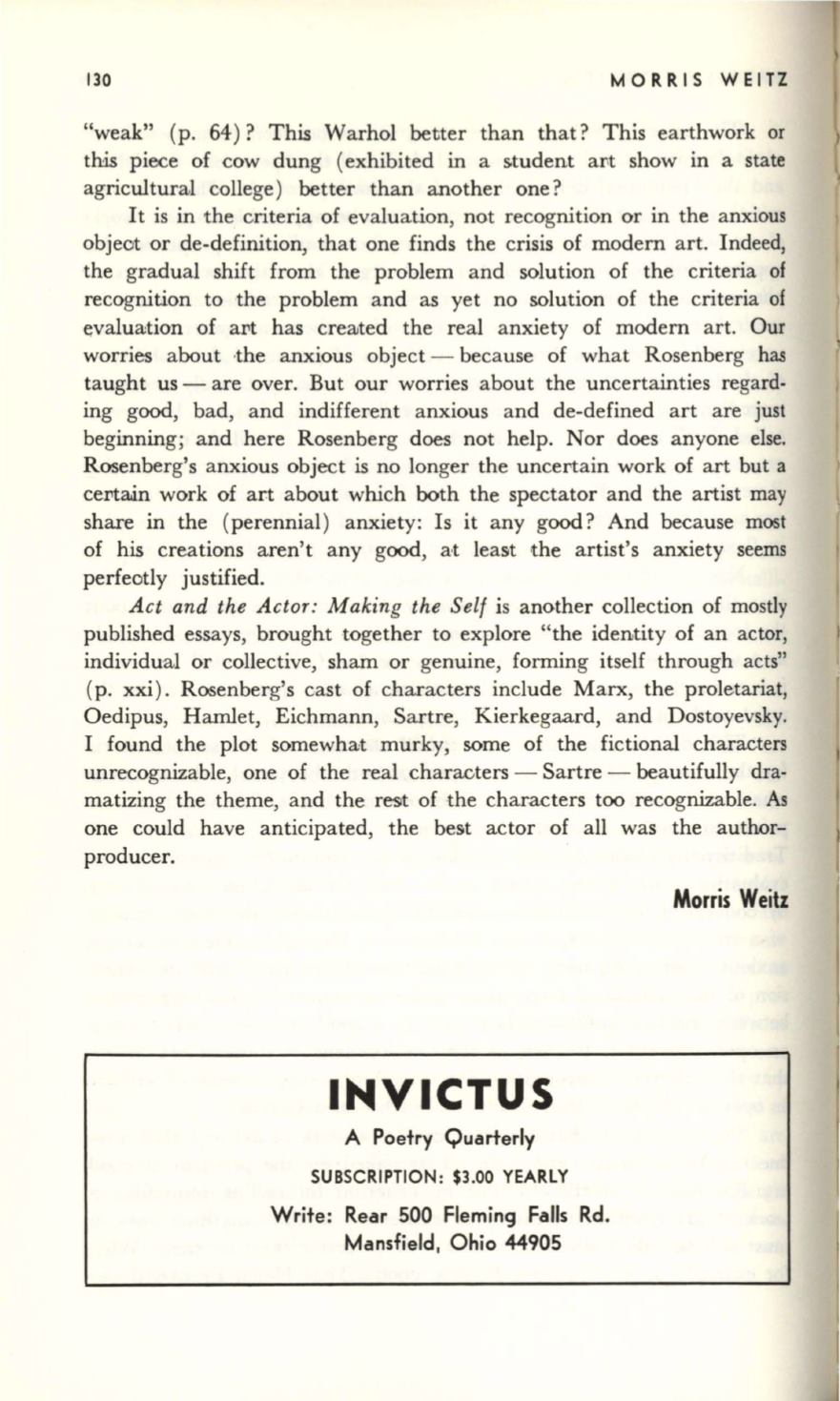
130
MORRIS WEITZ
"weak" (p. 64)? This Warhol better than that? This earthwork or
this piece of cow dung (exhibited in a student ar,t show in a state
agricultural college) better than another one?
It is in the criteria of evaluation, not recognition or in the anxious
object or de-definition, that one finds the crisis of modern art. Indeed,
the gradual shift from the problem and solution of the criteria of
recognition to the problem and as yet no solution of the criteria of
evaluation of al't has created the real anxiety of modern art. Our
worries about the anxious object - because of what Rosenberg has
taught us - are over. But our worries about the uncertainties regard–
ing good, bad, and indifferent anxious and de-defined art are just
beginning; and here Rosenberg does not help. Nor does anyone else.
Rosenberg's anxious object is no longer the uncel'tain work of art but a
cel'ta.in work of art about which both the spectator and the artist may
share in the (perennial) anxiety: Is it any good? And because most
of his creations aren't any good, at least the artist's anxiety seems
perfeotly justified.
Act and the Actor: Making the Self
is another collection of mostly
published essays, brought together to explore "the identity of an actor,
individual or collective, sham or genuine, forming itself through acts"
(p. xxi). Rosenberg's cast of characters include Marx, the proletariat,
Oedipus, Hamlet, Eichmann, Sartre, Kierkegaard, and Dostoyevsky.
I found the plot somewhat murky, some of the fictional characters
unrecognizable, one of the real characters - Sartre - beautifully dra–
matizing the theme, and the rest of the characters too recognizable. As
one could have anticipated, the best actor of all was the author–
producer.
INVICTUS
A Poetry Quarterly
SUBSCRIPTION : $3.00 YEARLY
Write: Rear 500 Fleming Falls Rd.
Mansfield, Ohio 44905
Morris Weitz


